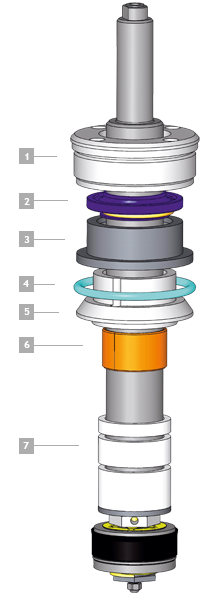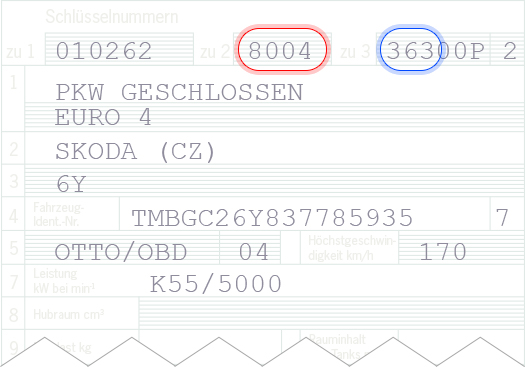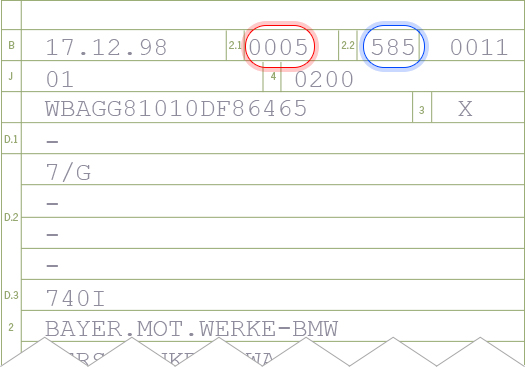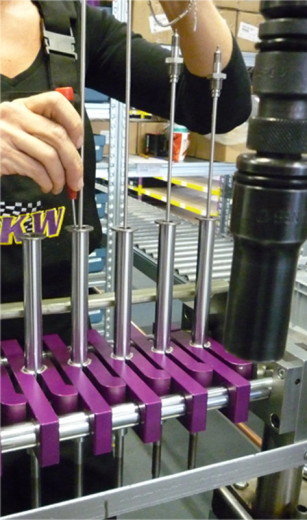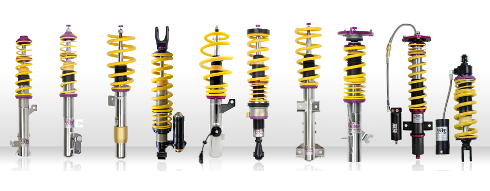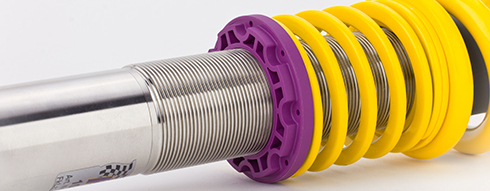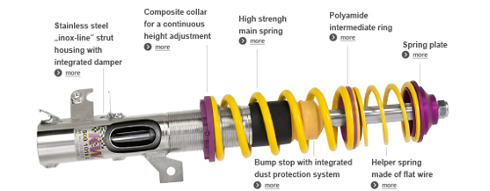
The KW V4 damping and valve technology
We offer optimally adjusted damping technology for each vehicle class and almost every application. The KW V4 and the KW V4 Clubsport use our leading racing technology, which enables independent adjustment of the rebound forces as well as the separate adjustment of the low-speed and high-speed compression.
Damper Basics - The function of a shock absorber
A shock absorbers job is to subside vibrations caused by the wheels, axles, and body. So the technically correct name for it would be a vibration damper. When driving over irregularities, the created shock or vibrations are absorbed by the suspension.
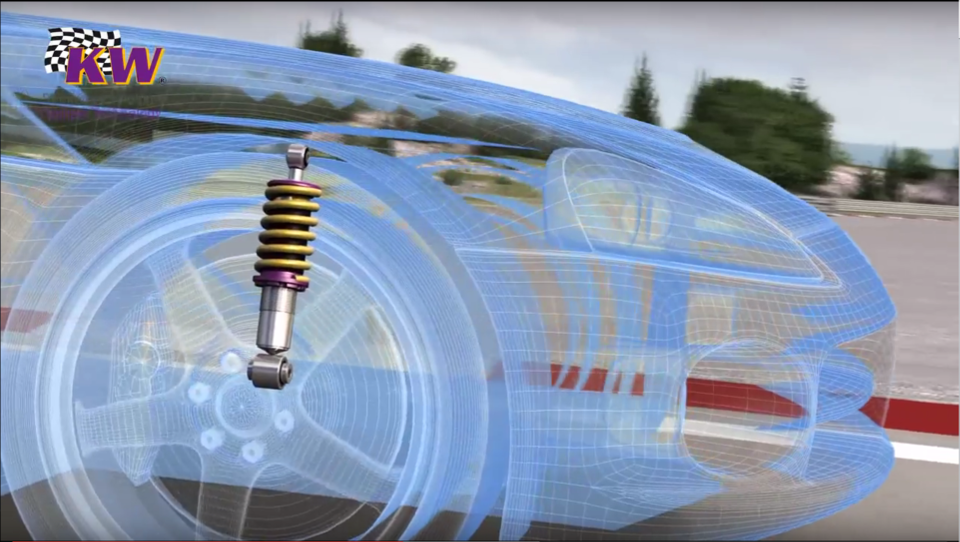
The spring wants to absorb and release stored energy. In a short sequence of these repetitive processes, a vibration arises.
These movements are transmitted via the piston rod to the shock absorber. Here the kinetic energy is converted to heat by hydraulic resistance in the shock absorber valve and reduces the vibrations to an inaudible minimum.
An intact shock absorber offers driving comfort and safety and prevents:
- Rocking of the body at successive irregularities
- Gasp or strong immersion during acceleration or braking
- Jumping wheels
- Swerving when braking
- Spinning in corners with a lacking tracking

The shock absorbers used in vehicles are usually twin-tube dampers or mono-tube dampers. A piston moves in an oil-filled cylinder in both damper types. The piston forces the oil through the valves, which creates resistance to the oil flow with the help of various holes and orifices.
The functioning of a KW twin-tube shock absorber
If a car bends while driving, the slightly pressurized oil is displaced by the plunging of the piston rod. It flows through the bottom valve (pressure stage valve), which regulates the flow rate, into the outer pipe. During rebound, the oil flows from the outer tube back into the inner tube. In addition to the channels in the bottom valve, the oil also has to flow through the rebound valve located at the piston rod, to get into the piston housing.
Our KW twin-tube dampers, which we manufacture directly in Germany, are gas-hydraulic or low-gas pressure vibration dampers. During production, we put the damper fluid or damper oil under pressure with up to five bar nitrogen. For this reason, one speaks of a low gas pressure vibration damper. This damper technology, which has also been tried and tested by KW in the aftermarket, is used as original equipment in over 90% of modern vehicles.
The suspension damper converts the kinetic energy of the suspension spring into thermal energy and radiates it to the environment. If a curve is driven, the KW coilover kit works in the inside of the curve of the vehicle in the rebound stage and the KW damper on the outside of the curve in the compression stage.
Rebound adjustment
Independent adjustable rebound damping
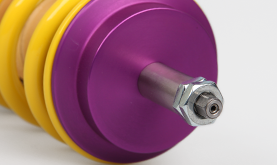
Rebound adjustment by an allen key
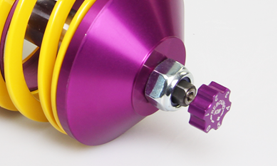
Rebound adjustment by plugged on adjustment wheel at enough space
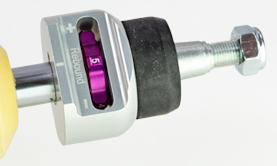
Rebound adjustment by fix integrated adjustment wheel
What does the rebound stage influence?
The rebound stage has a direct influence on the working speed when rebounding the piston rod and the relaxation rate of the chassis spring. It also regulates, so to speak, how quickly the chassis spring relaxes back to its original position. With different KW coilovers (V2, V3, V4, SC, CS, ...) the driver can adjust the rebound.
So to speak, the diameters of the rebound valves are opened for a smoother ride and closed for a tighter adjustment. With the adjustable rebound stage of the KW coilover kit, the vehicle handling and comfort are influenced.
16 Clicks - Best perfomance and easy adjustment
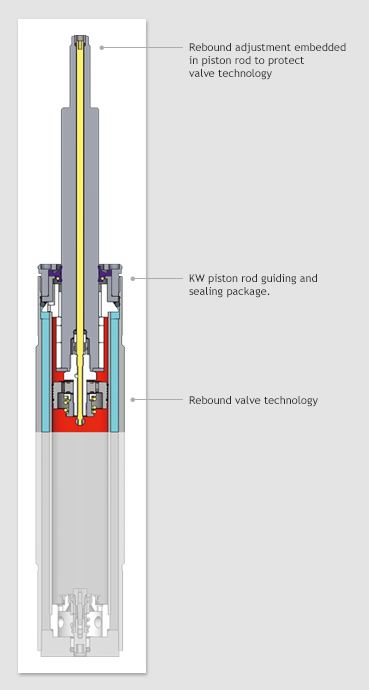
Oil flow during "hard" rebound stroke
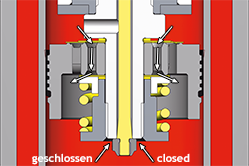
Bypass orifice with closed adjuster position. Digressive damping characteristic and the maximum achievable rebound damping. Damping is determined by the specific preload setup of the valve spring at the piston.
The result:
A firm but not a hard rebound stroke adjustment avoids rolling- and pitching motions.
Oil flow during "soft" rebound stroke
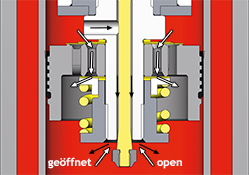
Bypass orifice with open adjuster position allowing for a progressive damping characteristic and ability to achieve minimum possible rebound damping .The bypass oil volume (black arrows) is not available anymore for the spring preloaded valve at the piston and the damping.
The result:
A lower rebound damping increases the driving comfort.
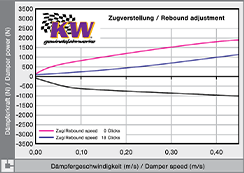
Graphic representation of the relation from damper speed (m/s) to damping force (N) when adjusting the rebound damping.
Compression adjustment
Individually adjustable compression damping in the high-speed and low-speed range
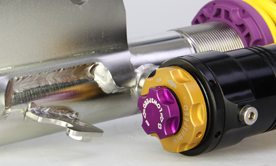
Separate and independent damping force adjustment for rebound and compression damping in low-speed and high-speed
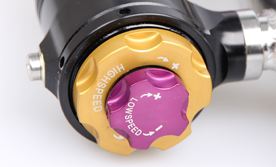
Individual damping force adjustment with color anodized adjustment wheels - with significantly noticeable clicks
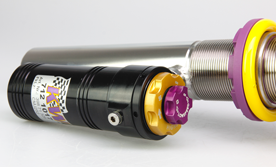
Basic setup from factory with adjustment range in + / - direction
How does the pressure level affect?
With different KW coilovers (V3, V4, CS, ...) it is also possible to adjust the basic setup of the bottom valve individually via the pressure level click setting. The pressure level regulates the speed of the piston rod when it is immersed. It has a direct effect on the body roll movements and the steering behavior.
If the pressure stage valves are opened, the pressure stage is reduced and the vehicle plunges faster when the steering wheel is turned. If the pressure level is increased, the piston rod plunges more slowly and the more stable the vehicle is when it comes to steering movements. The steering behavior becomes more precise, the more the pressure level is adjusted. With some KW coilovers (V4, CS 3-way, ...) the pressure level can also be set separately in the low and high speed range.
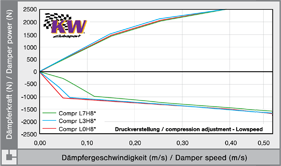
Graphic representation of the relation from damper speed (m/s) to damping force (N) when adjusting the compression damping in low-speed range.
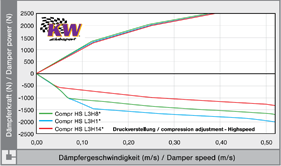
Graphic representation of the relation from damper speed (m/s) to damping force (N) when adjusting the compression damping in high-speed range.
Compression adjustment with 6 clicks in low-speed and 14 precise clicks in high-speed range
We consistently use our leading racing technology for the KW Clubsport 3-way and KW Variant 4 coilovers. The KW Clubsport 3-way and variant 4 differ in their elementary design of the basic setup. While the Clubsport was designed for the use of semi-slicks on track days, we deliver variant 4 with a vehicle-specific comfort setting, which can be quickly and intuitively changed to a performance setting using the adjustable dampers - if necessary - with the integrated setting wheels on the damper.
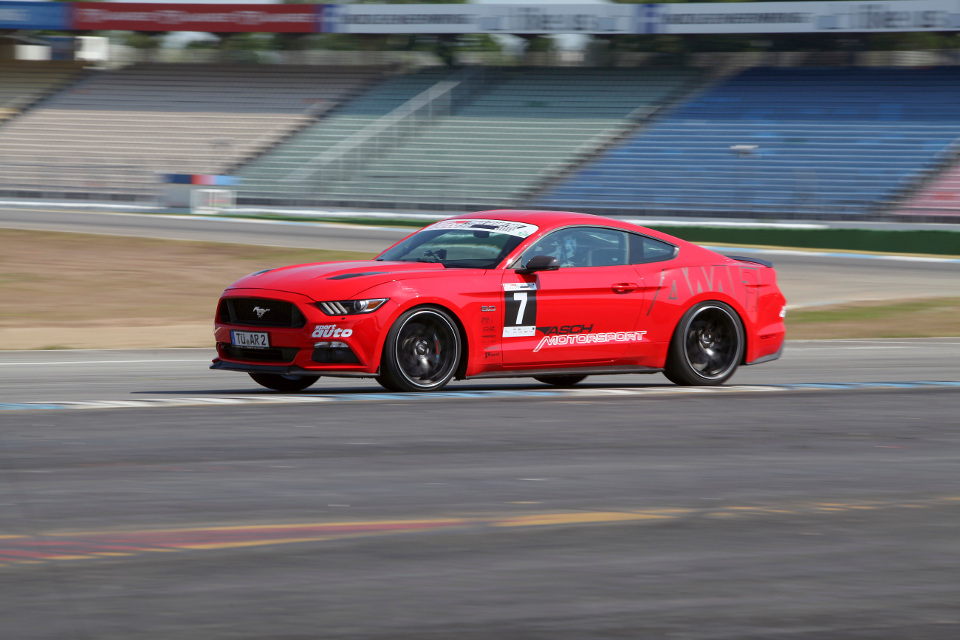
Racing technology for everyone
The vehicle specific basic setup of the KW Clubsport 3-way coilover kit was developed through numerous tests and runs on the Nordschleife, and the KW 7-post rig can be further adjusted with the click adjustment for your wheel loads, vehicle weight, and change in body stiffness due to a bolted cage, welded safety cage, or strut bars.
Sport or even more sport - it is your decision
The click adjustment of the patented KW two-valve control occurs directly at the reservoir. At the purple adjustment wheel you can manually vary the vehicle specific low-speed compression damping from the basic setup determined by KW test engineers with six precise clicks. With the golden adjustment wheel, which is placed below, you can individually adjust the high-speed compression damping with 14 precise clicks from the recommended basic setup. The low-speed range of the compression damping affect at low piston rod speeds (max. 0,2 m/sec) the strength of the damping during compression. The high-speed compression damping affects all faster speeds of the damper piston rod.
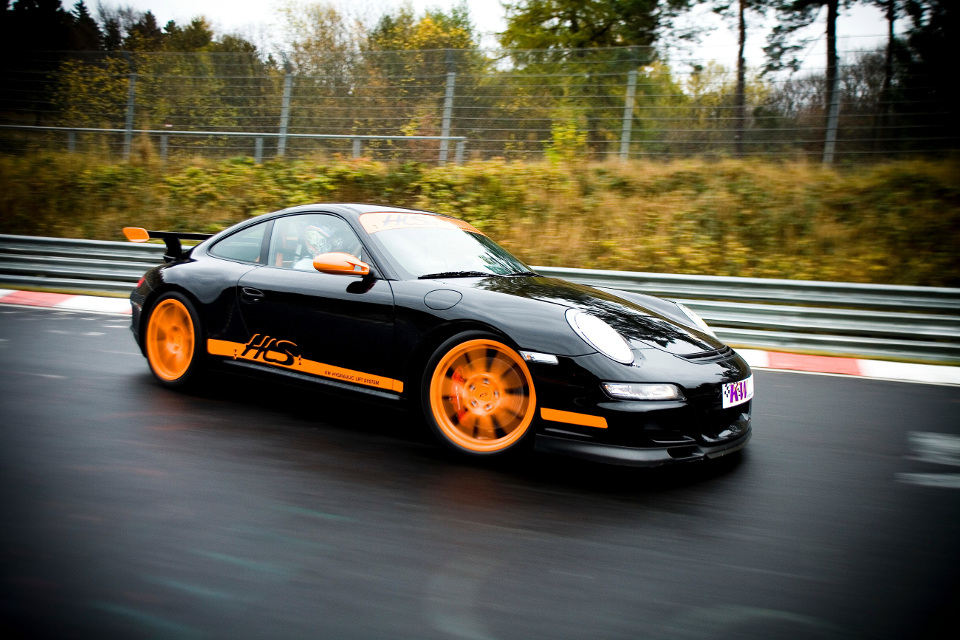
While driving over curbs and after jumps, the piston rod immerses faster especially at different and uneven asphalt surfaces like found on the Nürburgring Nordschleife. As an active sports car driver, the KW Clubsport 3-way coilovers offer you the possibility to decide yourself, exactly at which low-speed compression adjustment the high-speed damping shall get active.
- Separate and independent damping force adjustment for the rebound and compression in low-speed and high-speed
- Basic setup from factory with adjustment range in +/- direction
- Rebound damping: comfortable setting with 16 precise clicks
- Low-speed compression damping: with 6 precise clicks
- High-speed compression damping: with 14 precise clicks
KW piston rod guiding and sealing package
Our modular sealing system exceeds OEM standards. It can be opened easily and allows customized adjustments of the valve technology or rod / piston stroke by an aluminium nut.
- Nut is made up of high tensile aluminium
- Self-lubricated special NBR sealing
- Clamping sleeve
- O-ring made of temperature-resistant viton
- Guide bushing with bleed hole
- Special coated DU plain bearing
- Small increment rebound spacers
